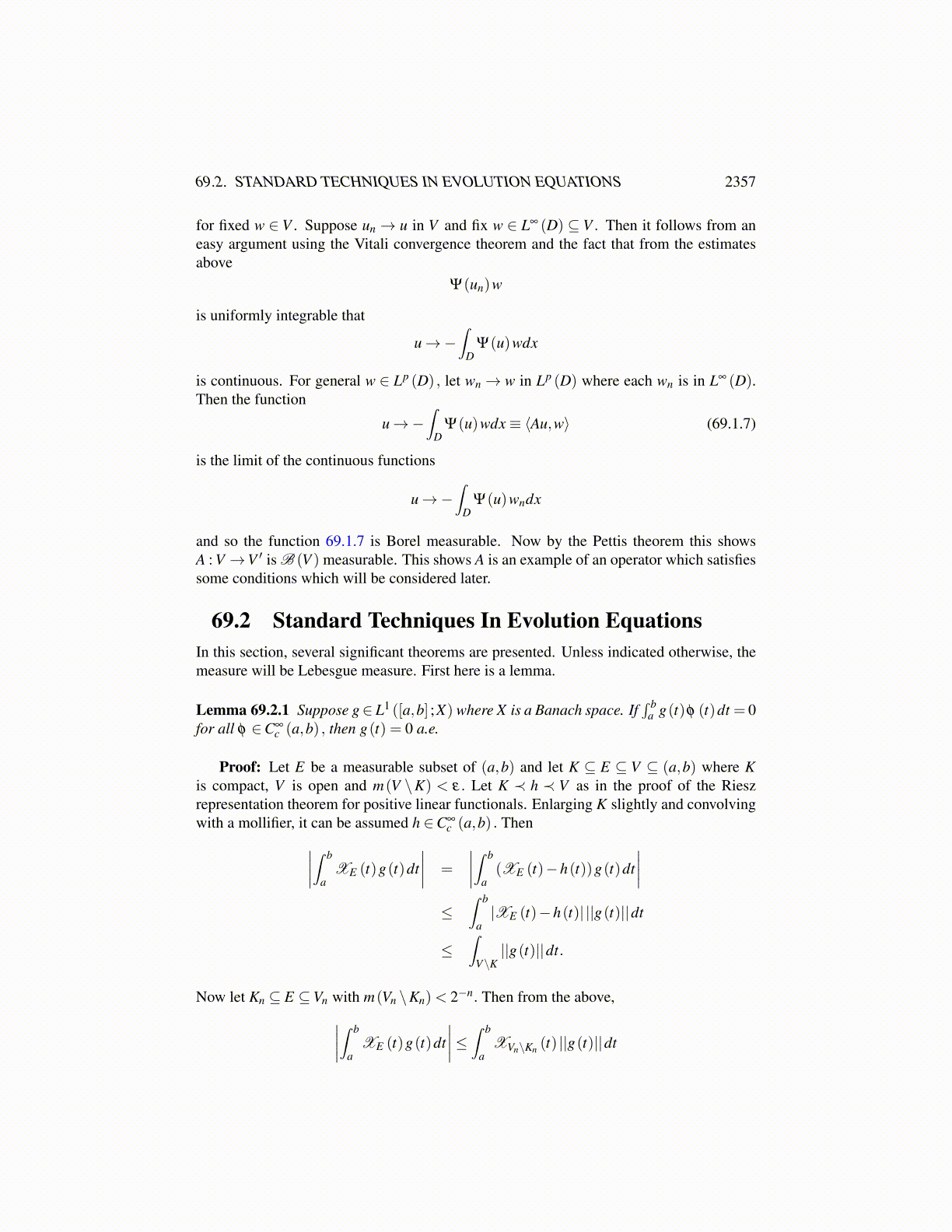
69.1. AN UNNATURAL EXAMPLE 2357
since Lp (D) is reflexive, an application of the Hahn Banach theorem shows there existsf ∈ Lp (D) such that
⟨g∗, f ⟩(Lp(D))′,Lp(D) ̸= 0, ⟨−∆φ , f ⟩(Lp(D))′,Lp(D) = 0 (69.1.2)
for all −∆φ ∈ H. However, it was just shown H could be considered a subset of (Lp (D))′
in the manner described above. Therefore, the last equation in the above is of the form
0 = (−∆φ , f )H = ⟨ f ,φ⟩=∫
Df φdx
and since this holds for all φ ∈ H10 (D) , it follows by density of H1
0 (D) in Lp′ (D) , thatf = 0 and now this contradicts the inequality in 69.1.2.
Now ∆ is defined on H10 (D) and it delivers something in
(H1
0)′ ≡H. Of course H1
0 (D)
is dense in Lp′ (D). Can ∆ be extended to all of Lp′ (D)? The answer is yes and it is moreof the same given above. For φ ∈ H1
0 (D) ,−∆φ ∈ H ⊆ (Lp (D))′ . Then by the above, forφ ∈ H1
0 (D) and f ∈ Lp (D) ,
⟨−∆φ , f ⟩ ≡ ⟨ f ,φ⟩ ≡∫
Df φdx
|⟨−∆φ , f ⟩| ≡ |⟨ f ,φ⟩| ≡∣∣∣∣∫D
f φds∣∣∣∣≤ ||φ ||Lp′ (D)
|| f ||Lp(D)
and so −∆ is a continuous linear mapping defined on a dense subspace H10 (D) of Lp′ (D)
and so this does indeed extend to a continuous linear map defined on all of Lp′ (D) givenby the formula
⟨−∆g, f ⟩ ≡∫
Df gdx
This proves the lemma.Thus letting V ≡ Lp (D) , and H ≡
(H1
0 (D))′, it follows V ⊆H ⊆V ′ is a Gelfand triple
with the understanding of what it means for one space to be included in another describedabove. To emphasize the above, for −∆φ ∈ H, f ∈ Lp,
⟨−∆φ , f ⟩ ≡ (−∆φ , f )H ≡ ⟨ f ,φ⟩ ≡∫
Df φdx
More generally, for g ∈ Lp′ (D) ,−∆g ∈ (Lp (D))′ according to the rule
⟨−∆g, f ⟩ ≡∫
Df gdx.
With this example of a Gelfand triple, one can define a “porous medium operator”A : V →V ′. Let Ψ be a real valued function defined on R which satisfies
Ψ is continuous (69.1.3)
(t− s)(Ψ(t)−Ψ(s))≥ 0 (69.1.4)